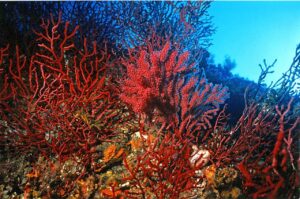A new study has revealed that the majestic blue whale is under threat from boat collisions in Chilean Patagonia. The world’s largest mammal was once on the brink of extinction due to rampant commercial whaling in the 19th century.
What Patagonia’s new doc Public Trust, has taught us
Letting this species recover should be a priority for ocean conservationists… so what is happening in Chile?
A blue whale’s yearly schedule is pretty intense: half the year feeding, half the year migrating and mating. So when they arrive to the Antarctic waters to feed on krill they have one mission only in mind: eat, eat and eat some more. Their attention span focuses on krill day and night, following them to the surface of the ocean in the evenings and to depths in the daylight. A blue whale can measure up to 30m and consume up to 500kg of krill per mouthful.
“Field observations that we have carried out indicate that when blue whales feed, they practically only pay attention to this activity. This makes them more prone to being hit by boats and particularly at night, when, according to other investigations, whales are on average closer to the surface as a result of their food also rising to the surface.”—Luis Bedriñana-Romano, lead author of the paper
The endangered whales in Chile must contend with up to 1,000 boats moving daily through their feeding area. Scientists have figured out that 83% of these operating vessels belong to Chile’s salmon farming industry in northern Patagonia.
So what can be done?
“Any incident of collision [resulting in] death of these animals represents a real threat to their conservation,”—Luis Bedriñana-Romano, lead author of the paper
Scientists are sounding the alarm bells, calling on Chile’s fishing industry to work together and draft protective measures that could prevent collisions with blue whales. For example, tracking routes where collision is most likely, or avoiding night travel through the feeding areas.













